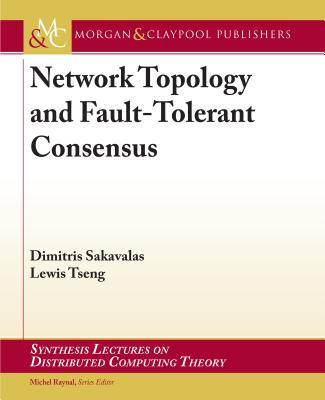Network Topology and Fault-Tolerant Consensus
暫譯: 網路拓撲與容錯共識
Sakavalas, Dimitris, Tseng, Lewis, Raynal, Michel
- 出版商: Morgan & Claypool
- 出版日期: 2019-05-13
- 售價: $3,350
- 貴賓價: 9.5 折 $3,183
- 語言: 英文
- 頁數: 151
- 裝訂: Hardcover - also called cloth, retail trade, or trade
- ISBN: 1681735687
- ISBN-13: 9781681735689
-
相關分類:
Computer-networks
海外代購書籍(需單獨結帳)
相關主題
商品描述
As the structure of contemporary communication networks grows more complex, practical networked distributed systems become prone to component failures.
Fault-tolerant consensus in message-passing systems allows participants in the system to agree on a common value despite the malfunction or misbehavior of some components. It is a task of fundamental importance for distributed computing, due to its numerous applications.
We summarize studies on the topological conditions that determine the feasibility of consensus, mainly focusing on directed networks and the case of restricted topology knowledge at each participant. Recently, significant efforts have been devoted to fully characterize the underlying communication networks in which variations of fault-tolerant consensus can be achieved. Although the deduction of analogous topological conditions for undirected networks of known topology had shortly followed the introduction of the problem, their extension to the directed network case has been proven a highly non-trivial task. Moreover, global knowledge restrictions, inherent in modern large-scale networks, require more elaborate arguments concerning the locality of distributed computations. In this work, we present the techniques and ideas used to resolve these issues.
Recent studies indicate a number of parameters that affect the topological conditions under which consensus can be achieved, namely, the fault model, the degree of system synchrony (synchronous vs. asynchronous), the type of agreement (exact vs. approximate), the level of topology knowledge, and the algorithm class used (general vs. iterative). We outline the feasibility and impossibility results for various combinations of the above parameters, extensively illustrating the relation between network topology and consensus.
商品描述(中文翻譯)
隨著當代通信網絡結構變得愈加複雜,實際的網絡分佈式系統變得容易受到組件故障的影響。訊息傳遞系統中的容錯共識允許系統中的參與者在某些組件故障或不當行為的情況下達成共識。這對於分佈式計算來說是一項基本重要的任務,因為它有著眾多的應用。
我們總結了決定共識可行性的拓撲條件的研究,主要集中在有向網絡以及每個參與者對拓撲知識的限制情況。最近,已經投入了大量努力來全面描述可以實現容錯共識變體的基礎通信網絡。儘管對已知拓撲的無向網絡推導類似的拓撲條件在問題引入後不久就已經進行,但將其擴展到有向網絡的情況被證明是一項非常不平凡的任務。此外,現代大規模網絡中固有的全局知識限制需要更為複雜的論證來處理分佈式計算的局部性。在本研究中,我們提出了解決這些問題所使用的技術和思路。
最近的研究指出了一些影響共識可實現的拓撲條件的參數,即故障模型、系統同步程度(同步 vs. 異步)、協議類型(精確 vs. 近似)、拓撲知識水平以及所使用的算法類別(一般 vs. 迭代)。我們概述了上述參數的各種組合的可行性和不可能性結果,廣泛說明了網絡拓撲與共識之間的關係。











